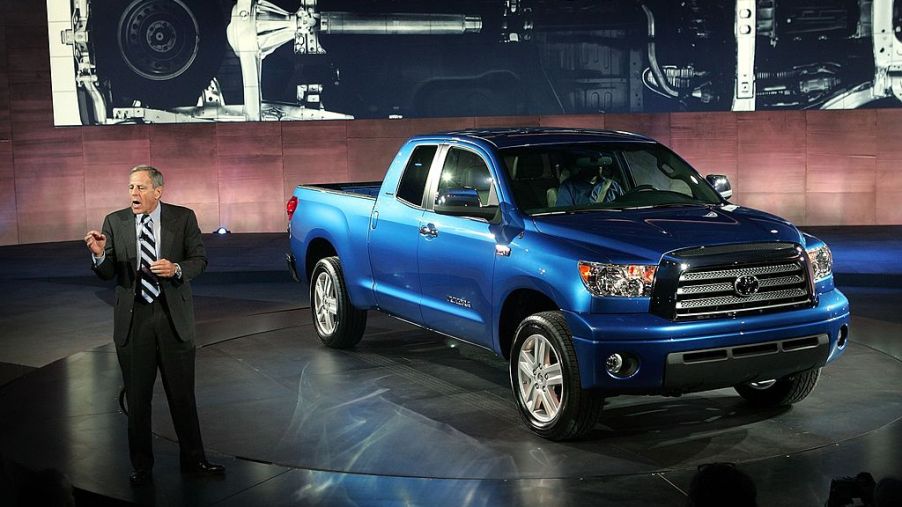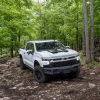
The Failure of the Toyota T100 Paved the Way for the Tundra
Though Toyota’s full-size Tundra has been around for 20 years, you may not remember that it’s not the automaker’s first attempt at a full-size pickup. Back before Toyota was competing with other American truck giants, it tested the waters with the forgotten T100. But how did the T100 help Toyota create the now-successful Tundra?
Where Toyota’s truck history began: the full-size Toyota T100
Oddly enough, Toyota took its T100 namesake from Ford’s cue of the F-150. According to AutoTrader however, “it’s like Toyota knew the truck wasn’t quite as good as the F-150, so they didn’t want to step on Ford’s turf by elevating their randomly chosen number as high as Ford’s.” Even stranger is the fact that T100 pickup wasn’t even really built by Toyota.
Toyota knew it didn’t have much experience back in 1992 to create a full-size pickup like Ford and Chevrolet. So it outsourced both engineering and manufacturing to its subsidiary, Hino- a company that mostly focused on commercial vehicles and buses. As it turns out, this may not have been the best choice for Toyota when trying to branch successfully into the full-size pickup segment.
When the Toyota T100 launched for the 1993 model year, it was clear from the beginning that it wasn’t going to compete with the big dogs that Chevy, Ford, GMC, and even Dodge were putting out. Not only was the T100 not quite as big as its full-size competition, but it hit the segment with only one engine choice, a 3.0-liter six-cylinder, that made a measly 150 hp.
Even though Toyota increased the hp to 190 in 1995, the T100’s power was nowhere comparable to rivals. According to Cars.com, in 1994, Toyota even tried offering a smaller, four-cylinder T100. Even after adding a supercharger option in 1997, the T100 still only produced 245 hp and the message from truck buyers was clear: Toyota needed a better truck.
How the T100 became the Toyota Tundra
In 1998, the Toyota T100’s production was halted. Sales remained stagnant for the T100, as it was criticized for many things. So if Toyota wanted to remain in the pickup competition, it needed to step up its game. But Toyota was ok with admitting it needed to fail before it could succeed. According to Auto News, Toyota viewed the T100 as a way to “get into the market, improve it, then get it right.”
Toyota used its failure with the T100 to create a new and improved successor. Using its own failure, market research, data from owners and dealerships, and more, Toyota used its entire team of engineers to develop a more proper, full-sized truck.
Using a new assembly plant, Toyota’s engineers planned to design the new pickup with everything the T100 didn’t offer. It took a few years, but Toyota’s full-size Tundra made its debut for the 2000 model year. It hit the segment with a bigger, more powerful eight-cylinder and even though sales still couldn’t compete with its biggest rivals, Toyota started gaining some full-size truck loyalty.
How Toyota won over the truck world with the Tundra
Toyota had been proving for years that it could build reliable, dependable, and well-performing vehicles. But to break into the truck world, you need more than a winning brand name. But once truck owners got their hands on the new Tundra, the truck world quickly learned that Toyota can put its reliability and impressive engineering into a full-size truck.
According to Consumer Reports, the first generation of Toyota Tundras (model years 2000-2006) is described as “comfortable, quiet, handles relatively well and has a super smooth powertrain.” All model years received an impressive overall reliability and owner satisfaction score of either four or five (out of five).
As evidenced by the Tundra’s current popularity, Toyota took its failure with the T100 to heart and created a full-size pickup that America loves.


